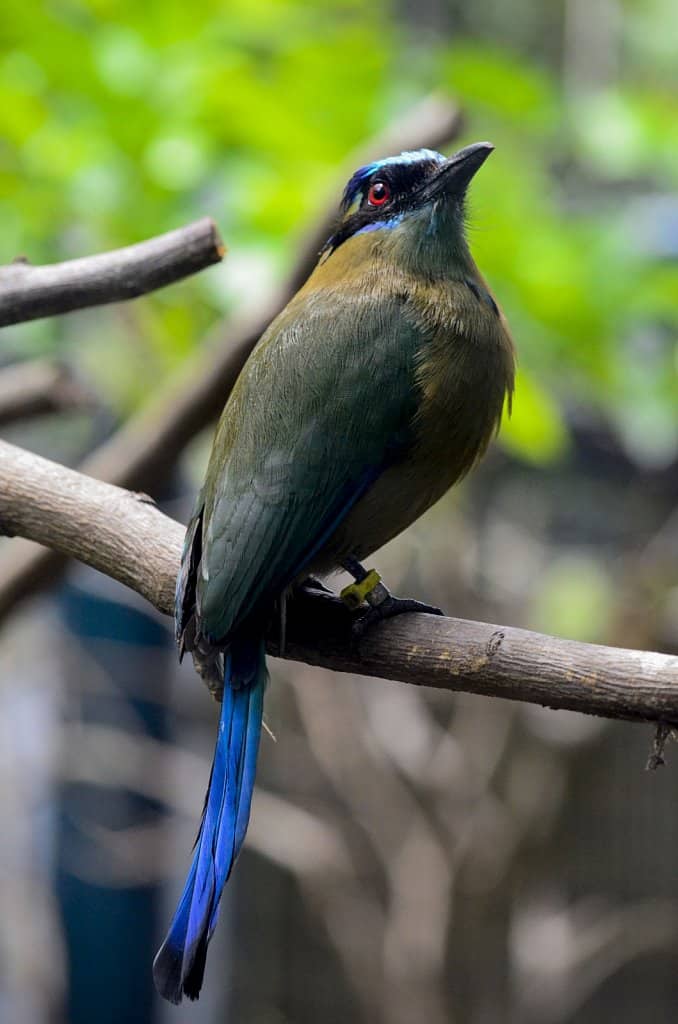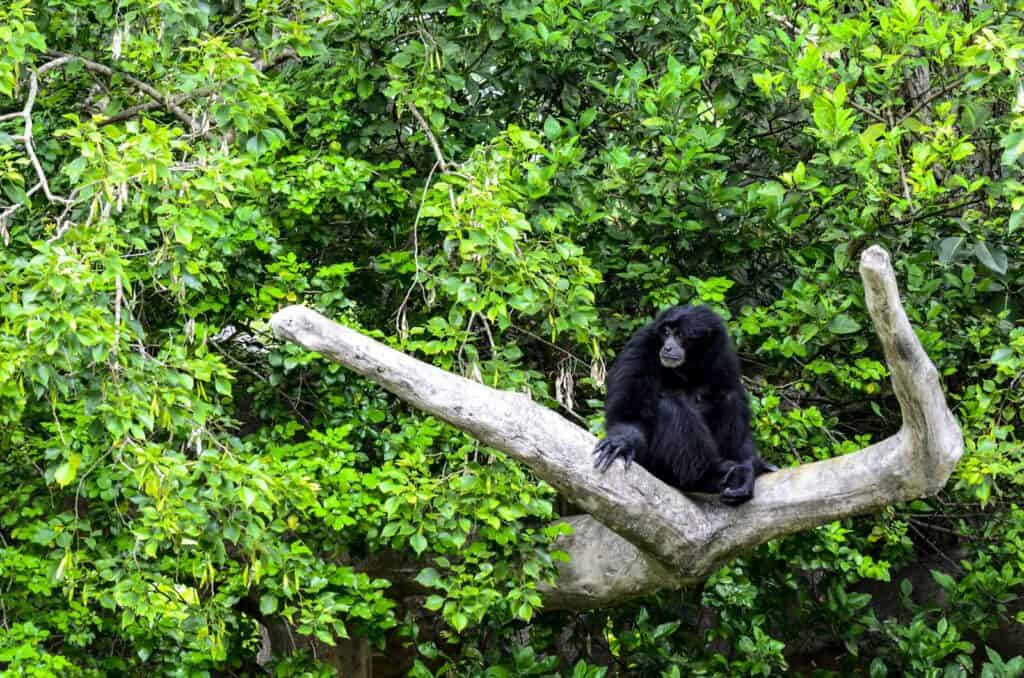The Guardabarranco (Eumomota superciliosa) is a bird species of the Momotidae family, also known as the Motmots. This species is indigenous to Nicaragua, making it the country’s national bird. Guardabarranco is popular among bird watchers and nature enthusiasts due to its brilliant and colorful plumage. The purpose of this page is to provide a thorough review of the Guardabarranco, including its physical traits, habitat, behavior, and conservation status.
Physical characteristics include:
Guardabarranco is a medium-sized bird, measuring roughly 32cm (12.5 inches) in length and weighing 65-80g. The colorful plumage of the bird, which is a blend of turquoise, green, and blue colors, is its most noticeable physical trait. The head is distinguished by a striking blue crown and a black mask around the eyes. The tail is long and graded, with two longer middle feathers than the rest. The beak is flattened and large, with a black tip and base, while the legs are short and thick. The plumage of male and female birds is similar, with the male having a little larger and more pronounced tail.
Habitat:
The Guardabarranco lives in Nicaragua’s forests and woodlands, with a range that stretches from the Pacific coast to the Caribbean lowlands. The bird favors damp, deep woodlands, including those on hills and mountains. Guardabarranco can even be found in disturbed environments like coffee and cocoa plantations, as long as there is enough cover and food supply.https://www.youtube-nocookie.com/embed/_mO8m_mnTJk
Behavior:
Guardabarranco is predominantly a frugivorous bird that feeds on fruits, berries, and seeds. The bird has also been observed catching insects and small animals like lizards and frogs. Guardabarranco is a fast-moving and agile bird that is frequently spotted darting from tree to tree and making short, fluttering flights to gather insects. The bird’s call is a loud, croaking sound that can be heard in the early morning and late afternoon.
Guardabarrancos are monogamous birds that form long-term connections. The birds build their nests in natural cavities like tree hollows and crevices, and the female lays 3-4 eggs per clutch. Both parents help incubate the eggs and raise the chicks, with the male frequently bringing food to the nest. The breeding season varies according to location, with some populations reproducing all year and others breeding from February to July.
Status of Conservation:
Despite being Nicaragua’s national bird, the International Union for Conservation of Nature lists the Guardabarranco as a species of least concern (IUCN). The bird has a relatively broad range and is neither threatened nor endangered. Nonetheless, habitat loss and fragmentation continue to be a problem for the species, with deforestation and agricultural development being serious risks. Because the bird relies on natural cavities for breeding, it is vulnerable to the loss of mature trees. Conservation measures, such as the establishment of protected areas and reforestation programs, are underway to conserve the bird’s habitat.
Conclusion:
Guardabarranco is a rare and beautiful bird that has a significant position in Nicaragua’s cultural and natural heritage. The bird’s unusual appearance and behavior make it an enthralling subject of study as well as a famous tourist destination for bird watchers and tourists. While the species is not currently threatened, it is critical to keep an eye on its populations and conserve its environment in order to ensure its long-term existence. The Guardabarranco serves as a reminder of the significance of protecting our natural resources and the diversity of life on Earth.



